B2B Blogging: Using Content to Effectively Nurture Potential Customers
Most B2B blogs fade into the background because they're written for algorithms or industry peers, not for the people making real decisions. Companies publish generic insights and safe opinions, and then face readers who leave after a few paragraphs.
In truth, blogging can be one of the most effective ways to build trust with potential customers, but only if it's used intentionally. Blog content that nurtures leads shapes how prospects see your expertise and what they believe you can do for them. It gives them reasons to stay in your orbit long before they're ready to buy.
Blog content that nurtures leads shapes how prospects see your expertise and what they believe you can do for them. It gives them reasons to stay in your orbit long before they're ready to buy.
In this piece, we'll look at how to turn your B2B blog into a consistent touchpoint that informs, reassures, and moves readers closer to choosing you, without pushing for it.
Be Helpful First
When someone's still figuring out their problem, they don't want a sales pitch. They want clarity.
Content at this stage works because it meets prospects where they are – confused, researching, and trying to understand what they're even dealing with.
Research shows that consumers are 131% more likely to buy from a brand right after reading early-stage educational content.
When people learn something valuable from you before you ever make a pitch, they remember your brand as a credible, generous source. That trust often translates into long-term loyalty.
Here's how to use content to be helpful:
-
Write content that solves problems your product happens to address, but don’t mention your product yet.
-
Please answer the questions prospects type into Google before they know solutions like yours exist.
-
Cover industry challenges, process breakdowns, common mistakes, and foundational concepts.
-
Make these pieces comprehensive enough that readers leave feeling smarter, not teased.
-
Structure matters too. Each piece should acknowledge what the reader’s probably dealing with, explain the landscape clearly, and point toward logical next steps without being pushy about it.
For example, consider how Shopify, the e-commerce website-building platform, accomplishes this. Their guide "How to Start a Trucking Business in 2025" walks readers through the basics of launching a trucking company. It's not about e-commerce platforms or websites (at least not initially). It covers licensing, fleet management, and business planning. Only later does it suggest that an online presence might help.
Their guide "How to Start a Trucking Business in 2025" walks readers through the basics of launching a trucking company. It's not about e-commerce platforms or websites (at least not initially). It covers licensing, fleet management, and business planning. Only later does it suggest that an online presence might help.
This guide works because it prioritizes the reader's journey over Shopify's sales cycle. By the time someone finishes reading, they trust that Shopify understands their world.
Boldly Compare Your Product to Your Competitors’
Most companies avoid comparison content because they're scared of appearing biased or drawing attention to competitors. But buyers are already comparing you to other options, with or without your input. If you don't control that narrative, someone else will.
Comparison content works because it positions you as transparent and confident. When you openly discuss alternatives and explain where you excel, you look like the honest player in the room. You also capture high-intent traffic from people who've moved past education and want to make a decision.
Here's how to use content to compare your product to your competitors':
-
Be fair but strategic. Acknowledge what competitors do well, then clearly explain where your solution differs and why those differences matter for specific use cases.
-
Don't trash competitors or make empty claims.
-
Use concrete details, like features, pricing structures, support models, and implementation timelines.
-
Help readers understand which solution fits which situation, then make a strong case for why yours is the right fit for their needs.
Vidpros, an on-demand video editing service platform, handles this directly. Their article "18 Top Unlimited Video Editing Solutions" reviews 18 different services in their space.
They don't hide from the competition. Instead, they list their own platform first and break down exactly what they offer, how their process works, and what sets them apart. The other 17 options get fair treatment, but Vidpros has already established itself as the benchmark.
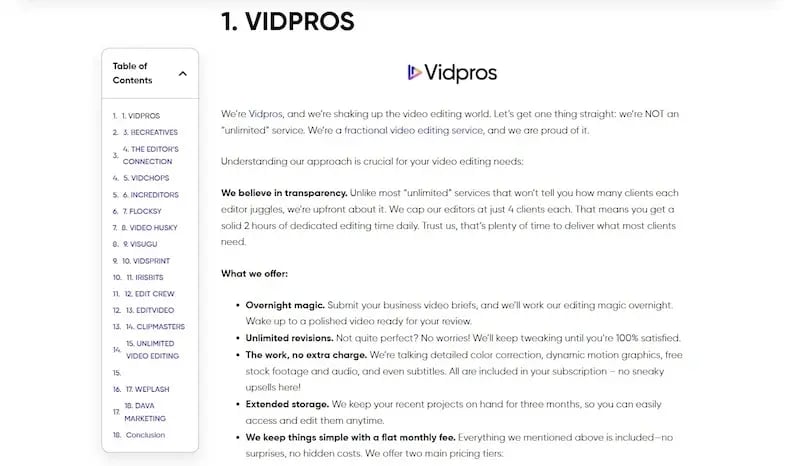
By the time readers scroll through the alternatives, they're comparing everything back to Vidpros. That's exactly the point of this post.
Be Strategic with CTAs and Product Mentions
When readers are close to making a decision, they want confirmation that a solution exists and works.
If you've already provided value through your content, mentioning your product at the right moment feels like a natural next step, not a bait-and-switch.
Timing changes everything. Early in the buyer's journey, product pitches feel intrusive. But when someone's reading about implementation challenges or specific use cases, they want to know how real companies solve these problems. A well-placed product mention answers that question without derailing the content.
Here's how to use CTAs and product mentions in your content:
-
Let the content stay educational.
-
Write the article as if your product doesn't exist, then look for moments where mentioning it adds genuine value.
-
These moments usually come when you're explaining a process that your product streamlines, discussing a common obstacle it removes, or outlining steps it automates.
-
Keep these mentions brief and contextual.
-
Link to relevant product pages or case studies, but don’t let the mention take over the paragraph.
Start in Wyoming, providing LLC formation and registered agent services in Wyoming, demonstrates this in their post “How to Form a Wyoming LLC for Non-Residents.”
The article walks through the entire formation process – paperwork, requirements, and timelines. It's legitimately useful whether you use their service or not. However, at key decision points, like when discussing registered agent requirements or costs, they link to their own services.
The placements in this post feel logical because they appear exactly when readers are thinking, "Do I handle this myself or hire someone?” It's safe to say that they've earned the right to suggest themselves.
Turn Customer Wins Into Educational Narratives
Case studies prove your product works, but traditional formats often read like thinly veiled ads.
When you transform customer success into teaching content, you give prospects something they can use while showing what's possible with your solution.
This matters because B2B marketers consistently rank case studies as more effective than long-form articles, podcasts, infographics, livestreaming content, and print publications. Prospects trust real results over theoretical advice. But they engage more when those results come packaged as lessons they can apply, not just wins they should admire.
Here's how to craft effective case studies:
-
Focus on the strategy and decisions that led to success, not just the outcome.
-
Break down the customer’s original challenge, the approaches they tested, what didn’t work, and what finally clicked.
-
Include specific tactics, timelines, and obstacles they hit along the way.
-
Make the customer the protagonist and your product a tool that they use intelligently.
-
Write it so someone could follow the same playbook, whether they use your solution or not.
Hootsuite, a social media management and marketing platform, executes this well. Their post “How Eurpac Increased its Social Media Followers by 47%” walks readers through the strategies and tools used to achieve that growth.
It also shows their posting schedule, audience targeting decisions, and how they used Hootsuite's features to execute their plan. Readers leave with actionable ideas about social media growth and witness that Hootsuite is capable of supporting that kind of strategy.
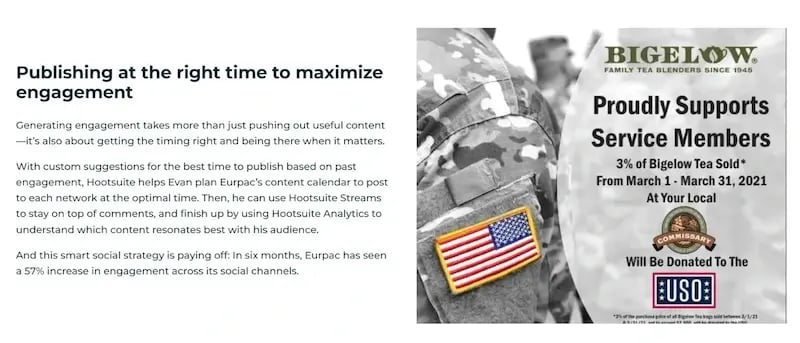
The educational angle here makes the case study feel valuable instead of promotional.
Provide Actionable Takeaways, Not Just Opinions
B2B decision-makers don't have time for thought leadership that sounds smart but leads nowhere. They need content that helps them do their jobs better today.
When your blog consistently provides practical steps, readers come back because they know you will not waste their time.
Actionable content creates immediate value. A reader can test your advice, see results, and build trust in your expertise before they ever talk to your sales team. You're also demonstrating that you understand the real work in solving their problems, not just the theory behind it.
Here's how to create actionable content:
-
Get specific. Instead of saying “optimize your campaigns,” explain which metrics to check first, what benchmarks to use, and what adjustments to make based on what you find.
-
Break processes into numbered steps.
-
Include screenshots, formulas, templates, or frameworks readers can copy. Answer the “how” and “why” behind each recommendation so people understand the logic, not just the instructions.
-
Avoid vague advice that sounds helpful but can’t actually be implemented.
A great example is Uproas, which provides premium agency ad accounts for social media. Their post "Mastering Facebook Ad Strategies for Real Business Growth" discusses what good Facebook advertising looks like.
But more importantly, it walks readers through audience targeting techniques, budget allocation methods, creative testing frameworks, and optimization sequences. Each section includes clear steps and explains when to apply them.
Readers can finish this article with a playbook they can execute immediately, which positions Uproas as a resource that understands the practical realities of paid advertising.
Leverage SEO to Attract Qualified Traffic
B2B buyers don't stumble onto your blog by accident. They search for specific answers to specific problems. When you optimize content around the terms they're already using, you intercept them at the exact moment they need help.
This results in a highly qualified audience, leading to better business outcomes.
Leads generated through SEO have an impressive 15% close rate, demonstrating the power of reaching people at the right moment.
Here's how to optimize your content for search engines:
-
Research the questions your prospects actually ask.
-
Use keyword tools, check search volumes, and analyze what's already ranking.
-
Then create content that answers those queries better than existing results.
-
Structure your posts for readability. Use clear headings, short paragraphs, and descriptive subheadings that match search intent.
-
Link internally to related content so readers can go deeper.
-
Optimize meta descriptions, include relevant visuals, and make sure your content loads quickly.
Wix, an AI-powered website building platform, demonstrates this in their e-commerce security checklist. The post targets searches around website security threats and protection strategies. It opens by explaining security risks and their business impact, then provides a checklist of protective measures.
At the top of that checklist is choosing a secure e-commerce platform. Wix naturally explains how their builder addresses each threat mentioned earlier.
The entire piece uses targeted keywords, internal links, scannable formatting, and optimized meta tags to rank well and convert search traffic into qualified leads.
Feature Guest Contributors and Industry Experts
Your audience trusts you and wants to hear from other respected voices in the field.
Guest contributors bring fresh perspectives, different experiences, and their own credibility to your platform. They also expand your reach. Their networks see the content too, bringing new prospects to your blog.
This can help position your brand as a hub for industry knowledge rather than just a vendor with opinions. When recognized experts choose to publish on your platform, it signals that you're a serious player worth paying attention to. It also gives prospects access to diverse viewpoints, which builds trust in your content overall.
Here's how to execute this well:
-
Choose contributors strategically. Look for people whose expertise complements your content gaps or adds depth to topics your audience cares about.
-
Don’t just feature anyone willing to write for you. Select voices that genuinely enhance the conversation.
-
Give them editorial freedom to share real insights, not thinly disguised promotions.
-
Promote their contributions across your channels and tag them so their audience discovers your platform.
Pando, an employee progression platform that modernizes performance management practices, uses this approach. For their "CPO’s Guide to Influencing the C-Suite," they brought in an established entrepreneur and CEO to share practical insights on executive-level influence.
The contributor's real-world experience leading a successful company adds weight that Pando's internal team couldn't provide alone.
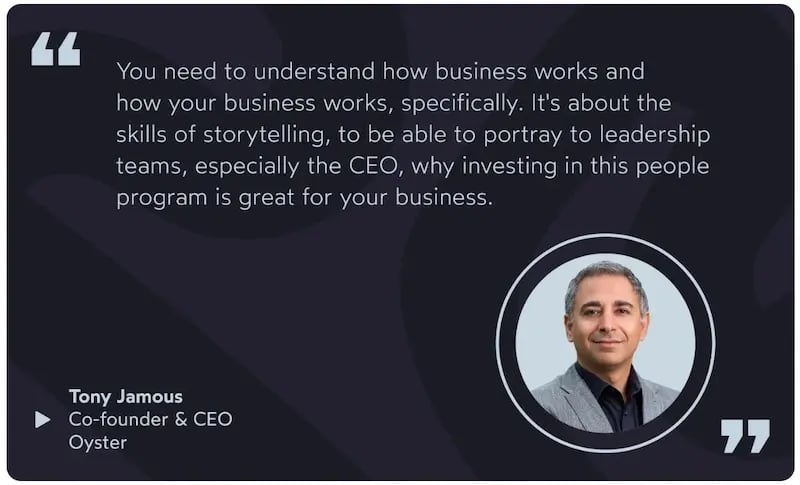
Prospects reading this piece get valuable advice from someone who’s navigated these challenges firsthand. At the same time, Pando reinforces its position as a resource that connects people to the best thinking in the field.
Create New Industry Knowledge
Most B2B content recycles the same insights everyone else shares. When you produce original research from data only you can access, you create something nobody else can replicate.
Other publications cite you, and your brand becomes the reference point; prospects see you as an authority who shapes industry understanding rather than follows it. Original data cuts through the noise. Journalists, bloggers, and competitors will link to your research, expanding your reach organically.
Prospects trust companies that contribute new knowledge to the field because they demonstrate deep expertise and investment in the industry's future.
Here's how to produce new industry knowledge:
-
Organize the data you already collect through your platform or customer base.
-
Look for patterns, trends, or insights that would genuinely interest your audience.
-
Analyze the data rigorously. Weak methodology undermines credibility.
-
Present findings in a digestible format with clear visuals, key takeaways, and context that explains why the data matters.
-
Make it easy to share and cite by including quotable statistics and downloadable assets.
Wistia, a video marketing platform for businesses, consistently executes this strategy. Their annual "State of Video Report" analyzes over 100 million videos and surveys 1,300+ businesses to uncover trends in video marketing performance.
The report covers engagement patterns, optimal video lengths, platform preferences, and production approaches that drive results. It is packaged as an accessible, well-designed resource that visitors can download for free.
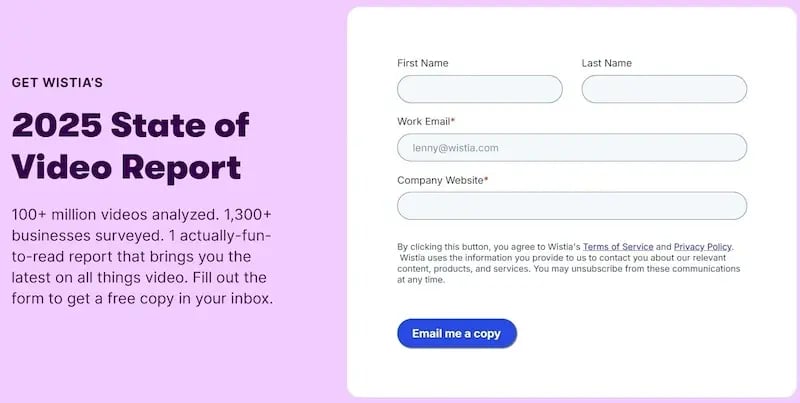
This research can be easily cited across the industry, positioning Wistia as the definitive source on video marketing data while attracting prospects who want to learn from companies leading the conversation.
Final Thoughts
Your blog can become the resource prospects return to as they move from confusion to clarity to commitment. But that only happens if you treat content as a system, not a collection of random posts.
You now have the tactics to transform it into your most reliable nurturing tool. The final step is to choose one and begin. Build it into your workflow. Then add another.
Your prospects are already searching, comparing, and trying to make sense of their options. The question is whether they'll find you when it matters most.
This content is also available in:
- German: B2B-Blogging: Mit Inhalten effektiv potenzielle Kunden ansprechen
- Spanish: Blogging B2B: Usar contenido para atraer prospectos eficazmente
- French: Blogging B2B : nourrir efficacement les prospects
- Italian: Blogging B2B: Usare i contenuti per coltivare i prospect
- Romanian: B2B Blogging: Atragerea eficientă a prospecților prin conținut
- Chinese: B2B 博客:利用内容有效培育潜在客户

Opinions expressed in this article are those of the guest author. Aspiration Marketing neither confirms nor disputes any of the conclusions presented.





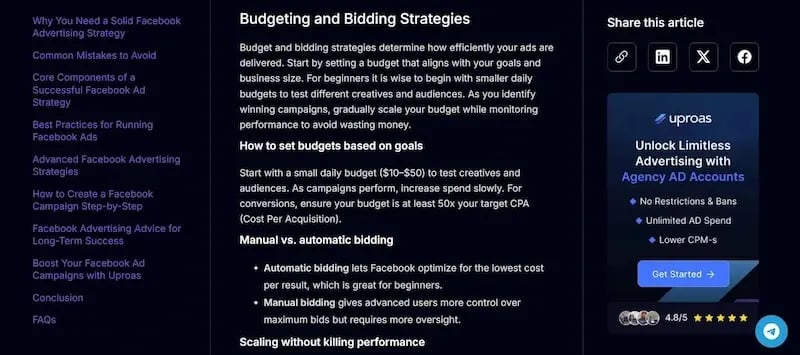





Leave a Comment